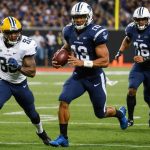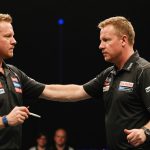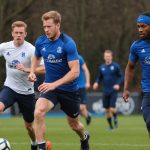Effective Strength Training Routines
Understanding the importance of compound exercises is crucial for basketball players aiming for overall muscle growth. Compound exercises, such as deadlifts and squats, engage multiple muscle groups, enhancing strength more efficiently than isolated movements.
When focusing on strength training for basketball players, it’s essential to incorporate routines that support the unique demands of the sport. Emphasising exercises that improve power, agility, and endurance is beneficial. For instance, including plyometrics in off-season strength training helps develop explosive movements crucial for quick sprints and jumps on the court.
Also read : Accelerate your game: proven strategies for uk basketball players to sharpen their offensive first step
Equally important is incorporating bodyweight exercises, such as push-ups and lunges, which are vital for muscle endurance and agility. These exercises not only maintain muscle but also improve balance and coordination, essential skills for basketball players.
For optimal results, each routine should also integrate a balance between free weights and machines to encourage muscle stabilisation and strength. Regular attention to muscle maintenance techniques is needed to prevent fatigue and injuries. Emphasising proper form, gradual progression, and adequate rest will help in sustaining muscle health and performance throughout the regular season.
Also to discover : Maximizing Injury Prevention: The Best Cross-Training Techniques for Basketball Players in the UK
By tailoring a balanced and effective strength training regimen, basketball players can enhance their performance while also reducing the risk of injury.
Nutritional Strategies for Muscle Maintenance
Ensuring optimal nutrition for basketball players is paramount, particularly when focusing on muscle recovery foods. Proteins play a starring role, making them a crucial component of any dietary plans for athletes. They aid in repairing and building muscle tissue post-exercise. Sources such as lean meats, eggs, and plant-based proteins should be focal points in meal planning.
Carbohydrates cannot be overlooked. These energy powerhouses restore glycogen levels depleted during training. Include whole grains, fruits, and vegetables to maintain energy levels and stimulate muscle recovery.
Healthy fats, while often misunderstood, are vital. They provide long-term energy and assist in anti-inflammatory processes. Avocado, nuts, and olive oil are excellent additions to an athlete’s diet.
Hydration is another critical aspect. Proper intake supports overall muscle function and aids in nutrient transport. Athletes should aim for a consistent fluid intake, adjusting for activity intensity and climate conditions.
Meal planning for off-season nutrition should focus on balanced portions of these nutrients. Incorporating a variety of foods ensures a broad spectrum of vitamins and minerals, optimizing muscle maintenance and growth.
By adhering to these strategies, athletes can promote efficient muscle recovery and maintain peak condition, ready to tackle their athletic pursuits.
Recovery Methods to Optimize Performance
Understanding the critical role of recovery techniques for athletes can significantly enhance performance and reduce injury risk. Implementing effective muscle recovery methods, such as ensuring adequate sleep and rest, forms the cornerstone of an athlete’s recovery process. Sleep is vital as it facilitates muscle repair and rejuvenation, allowing athletes to maintain peak performance levels.
Incorporating daily practices like foam rolling and stretching effectively aids in releasing muscle tension and improving flexibility. Foam rolling targets specific muscle groups, breaking down knots and promoting blood flow, while stretching helps lengthen muscles, enhancing overall mobility.
Active recovery methods, such as light jogging or swimming, are also beneficial. These activities increase blood circulation, helping to flush out lactic acid build-up and reduce muscle soreness. Additionally, active recovery can be tailored to suit individual needs, providing a customised approach to recuperate while maintaining fitness levels.
Implementing off-season recovery strategies is equally crucial. These periods should focus on rest and strategic workouts that balance intensity with recovery, ensuring athletes return stronger and better prepared for the next season. By prioritising recovery, athletes can achieve long-term success without compromising their health or performance.
Exercise Variations for Off-Season Development
In the off-season, basketball players can significantly benefit from exercise variations beyond traditional drills. Off-season workouts for basketball are crucial not only for maintenance but also for enhancing overall athleticism and muscle balance. Engaging in cross-training for athletes can help develop underused muscles, reduce the risk of injury, and improve overall performance on the court.
Including activities such as swimming, cycling, or yoga in an athlete’s regimen provides both physical and mental breaks from the sport while still promoting athletic growth. These activities help maintain cardiovascular fitness and flexibility, crucial components for basketball players.
For a more targeted boost to explosiveness, incorporating plyometric exercises is essential. Exercises like box jumps, depth jumps, and explosive push-ups are effective methods to retain and even enhance leaping ability during the off-season. Plyometrics emphasize power and speed, aiding athletes in maintaining their competitive edge.
It is advantageous to vary exercises, as this not only prevents burnout but also ensures that players retain their enthusiasm and drive. Adopting these cross-training strategies and exercise variations ensures that athletes remain balanced and agile, ready for the upcoming season.
Addressing Common Off-Season Challenges
For basketball players, the off-season can present unique challenges. Maintaining motivation amidst the absence of regular games is often difficult. Players may find it hard to adhere to training routines. This is crucial, however, as structured off-season training helps to sustain skills and support long-term goals.
Typical obstacles include lack of access to facilities, training planning difficulties, and mental fatigue. To overcome these, players need to establish clear, measurable off-season goals and employ flexible training routines. For instance, if gym access is limited, incorporating outdoor drills can help maintain fitness and agility.
Tracking progress against goals keeps motivation high. Using tools like training logs or apps can track achievements and areas needing improvement. This active engagement not only provides accountability but also fosters a sense of accomplishment and progress.
Here are some tips for staying motivated:
- Align training activities with personal interests to make sessions enjoyable.
- Set intermittent milestones and rewards to maintain motivation.
- Pair up with a training buddy to create a supportive environment.
These strategies help players to remain committed, ensuring that the off-season is a period of growth and preparation rather than stagnation.











